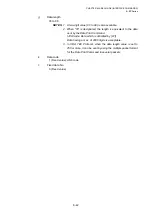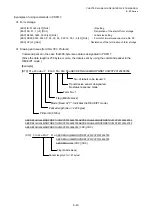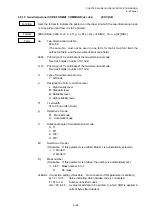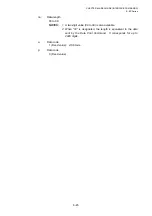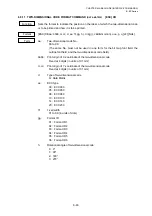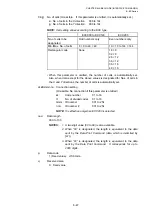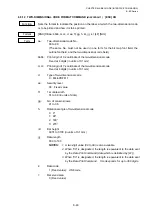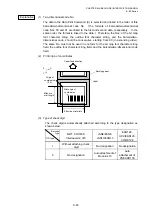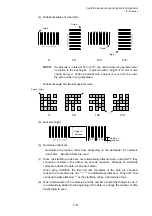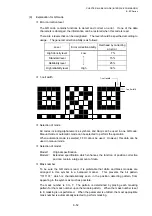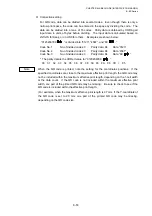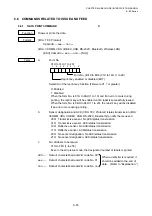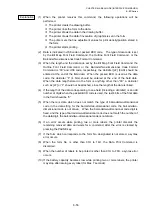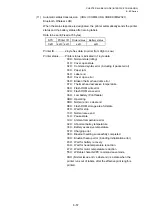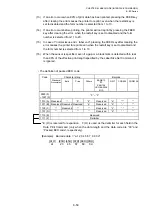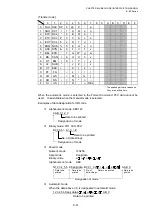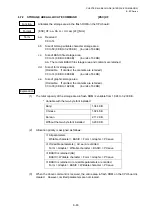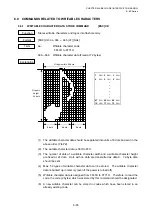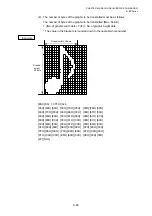
CHAPTER 6 LABEL MODE (INTERFACE COMMANDS)
B-EP
Series
6-53
h
Connection setting
For QR code, data can be divided into several codes. Even though there is only a
narrow print space, the code can be entered in the space by dividing the code. The
data can be divided into a max. of 16 codes. Parity data is obtained by XORing all
input data in units of bytes before dividing. The input data is calculated based on
shift JIS for Kanji, or on JIS8 for others. Examples are shown below:
“0123456789 ” is divided into “0123”, “4567”, and “89 .”
Code No. 1
No. of divided codes: 3
Parity data: 84
Data “0123”
Code No. 2
No. of divided codes: 3
Parity data: 84
Data “4567”
Code No. 3
No. of divided codes: 3
Parity data: 84
Data “89 ”
* The parity data is the XORed value for “0123456789 .”
30 31 32 33 34 35 36 37 38 39 93 FA 96 7B = 85
Note
When the QR code is printed, note the setting for the coordinates positions. If the
specified coordinates are close to the maximum effective print length, the QR code may
not be included within the maximum effective print length, depending on the 1-cell width
or the data count. If the QR code is not included within the maximum effective print
width, one part of the printed QR code may be missing. Be sure to check to see if the
QR code is included within the effective print length.
(For example, when the maximum effective print length is 97 mm, if the Y-coordinate of
the QR code is set to 90 mm, one part of the printed QR code may be missing,
depending on the QR code size.




